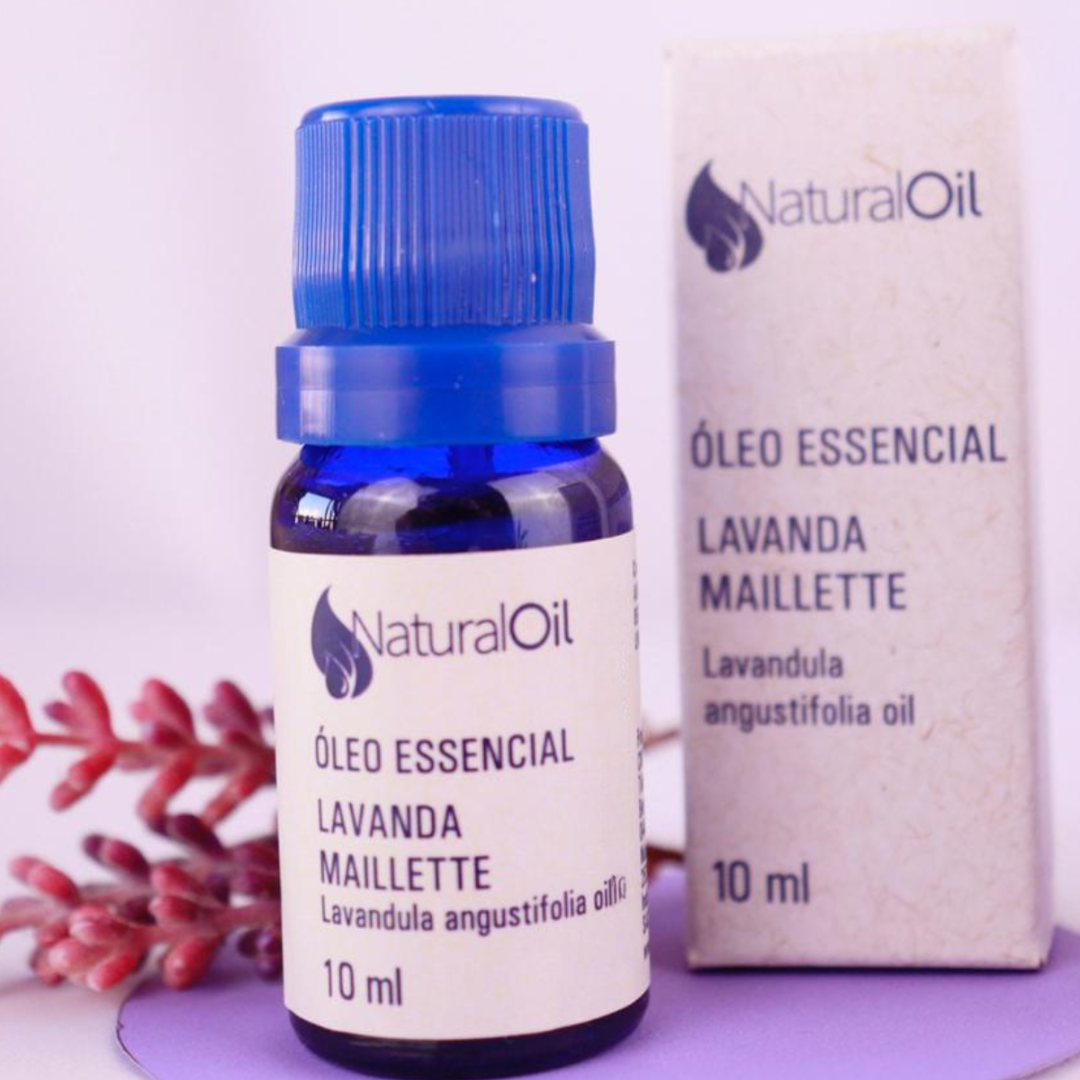Maillette Lavender Essential Oil
Maillette Lavender Essential Oil
Maillette Lavender Essential Oil
INCI: Lavandula angustifolia oil
Origin: France
Extraction: Steam distillation of the flowers
Properties: antiseptic, astringent, anti-infective, anti-inflammatory, anticoagulant, anticonvulsant, antiemetic, antifungal, antimicrobial, antimutagenic, antiparasitic, antirheumatic, antitumor, antiviral, antidepressant, antitoxic, analgesic, antibacterial, antispasmodic, antalgic, antihistamine, cardiotonic, soothing, carminative, cytophilic, cytophylactic, healing, deodorant, decongestant, diuretic, emmenagogue, hypotensive, insecticide, neuroprotective, nervine, relaxing, sedative, vermicidal and vermifuge.
Benefits: Maillette lavender essential oil has a wide range of therapeutic benefits. Can be used to treat insomnia, depression, anxiety, stress, anxiety, fear, headache, hysteria, acne, pimples, dry skin, oily skin, inflamed skin, aging skin, dull hair, dermatitis, diaper rash, insect bites, burns, bedsores, irregular menstrual flow, cramps, PMS, leukorrhea, nervous asthma, nervous eczema, breathing difficulties and nervous spasms.
Aroma: Aromatic, wild, tobacco-like, dry and with hints of carrot.
About our Lavender Maillette: Lavender Maillette is a fine variety of lavender that does not reproduce by seed, but by powerful vegetative. It is grown in the sunny mountain region of Provence, France. Lavender Maillette is a perennial shrub with a grayish-green color, with long stems and bluish flowers that exude a pleasant and characteristic aroma. The distillation of the essential oil takes place immediately after the harvest, without intermediaries, preserving the quality of the plant.
Safety: The quality of essential oils is extremely important, as they are liposoluble and easily absorbed by the skin, entering the bloodstream. It is important to note that Maillette lavender essential oil can cause dermatitis in some people. Check the instructions for applying pure oil to the skin, avoid high doses and do not use continuously for more than 28 days without breaks.
Where and how to use:
usage: topic
-
Babies: 1 drop to 1 tablespoon (15 ml) of vegetable oil.
-
Children: 1 drop to 1 teaspoon (5 ml) of vegetable oil.
-
Adults: 3 to 6 drops to 1 teaspoon (5 ml) of vegetable oil.
Electric Flavoring 100 ml: Add 5 drops to obtain a pleasant and long-lasting combination. Test with different drops to reach the desired intensity.
Baths:
-
Soaking: Dilute 0.5 ml of essential oil in a tablespoon (15 ml) of vegetable oil (honey or apple cider vinegar). Add a spoonful of the mixture to a full bathtub.
Cosmetics: Dilute 1 to 3 drops of essential oil in a teaspoon (5 ml) of vegetable oil and massage into the skin for a few minutes. You can also add essential oil to the desired cosmetic product.
-
Hair: Shampoo, conditioner, capillary mask, combing cream, ends repairer, capillary tonic, etc.
-
Skin: Liquid soap, after-shower oil, moisturizing cream, facial soap, facial moisturizer, foot creams, etc. Do not apply the essential oil in sunscreens or around the eyes.
Compress: Add approximately 8 drops (0.3 ml) of essential oil to 500 ml of water.
Inhalation: Drip 1 drop of essential oil in your hands, rub them together and take your hands in a shell shape to your nose, inhaling the aroma.
Massage: Dilute approximately 20 drops (0.5 ml) of essential oil in a tablespoon (15 ml) of vegetable oil or in a neutral massage cream.
Reminder: Always do a sensitivity test on a small area of the body before using the product. To preserve the essential oil, store it in dark glass containers, preferably without transferring it to the original container. Keep it in a cool, dry place.
Product features
Product features
Materials and care
Materials and care
Merchandising tips
Merchandising tips
Share




